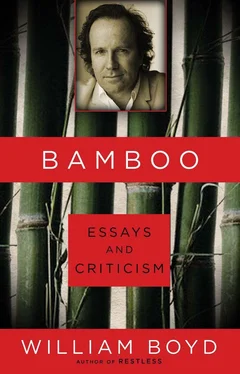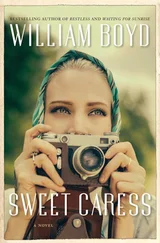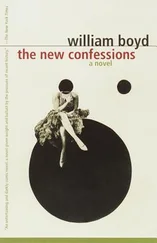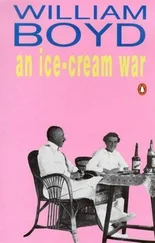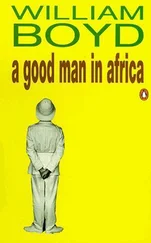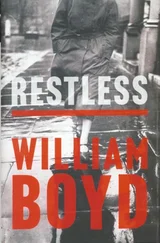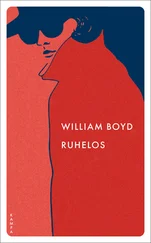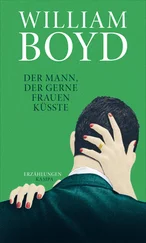For obvious reasons, most of the sequences were filmed well behind the lines — endless shots of Tommies marching through French villages, artillery blasting away at distant targets and so on. There was very little that was what you might call authentic front-line footage. It was dangerous in those trenches, after all, and the photographers wisely kept their distance. Yet many of the images that are routinely screened on our televisions around Armistice Day are patent fakes—“action” staged in training camps with soldiers playing dead. The real stuff, when you can find it, is unmistakable, but it is rare — and of course it is mute.
One day, by chance, I ordered up a sequence about a burial party, just a few minutes long, of young soldiers lugging in dead bodies after a battle and dumping them by temporary graves. The misery and nauseated dread on the faces of the living is highly distressing and, just for a moment, because the cameraman was there, I was vouchsafed a tiny glimpse of the reality of what these young men, these boys, were going through.
It was during those weeks of watching miles and miles of newsreel that the idea of making The Trench was born. We forget that the First World War took place in glorious Technicolor, so familiar are we with its monochrome version. We forget also that those smiling faces, chatting, brewing up, puffing on their Woodbines, also spoke. The silence — and the sepia — distance the event from us profoundly, and it seemed to me one of the great values of making a film about the trench experience of the First World War at the end of the twentieth century would be that, at the very least, we would see it and hear it approximately as it must have been.
And perhaps, more importantly, it would be of some significance, as we leave the century behind, to attempt once again to come to terms with one of its defining events. It can be argued, with some conviction, that the twentieth century actually began in 1914, not 1900. Or, even more pertinently, that it began on 1 July 1916 at 7.30 in the morning as the barrage lifted and the first waves of Kitchener’s Army left their trenches and walked across the dense untended meadows of the Somme valley, the misty morning sun beating down upon them, to their sudden, messy deaths.
Philip Larkin’s great poem “MCMXIV” contains the mordantly resonant line, “Never such innocence again”—but the innocence that the hundreds of thousands of eager volunteers possessed in 1914 remained intact until the hideous debacle of the Somme in 1916. Sixty thousand were killed and wounded that first day — the bloodiest day of slaughter in the history of the British Army; perhaps even the bloodiest day of slaughter in any battle between armies, ever.
In the event, whether the world would have changed anyway, the battle usefully marks the great watershed. Without the disaster of the Somme the allies might well have brokered a peace with the Germans in 1916. But the terrible carnage of the Somme (400,000 British casualties, 175,000 French, 600,000 German) meant that the war had to be fought on, and fought on to be won. The cost of the war continuing for another two years — in every dimension (lives, damage, money) — exceeded everything that the first two years had balefully notched up. And as for the war itself, after 1918, nothing in the Western world could ever be the same again — socially, economically, sexually, politically, geo-politically, culturally — the twentieth century was full-throatedly under way.
This may explain why in the past two decades British novelists, at least, may have felt like re-exploring those turbulent four years. But I have a feeling that what may be whizzing about in the zeitgeist doesn’t necessarily produce good art: good journalism, yes, good non-fiction, undoubtedly, but most novelists are drawn to a subject by the small scale, rather than the large. (How can you write a novel about the deaths of 9,000,000 people over a period of fifty-two months?)
The writer — the film-maker, the playwright — is drawn to a subject, I believe, by character and story, by their potential and by the imaginative possibilities of elaborating on them. One needs only to glance at any portrait or snapshot of the soldiers of the Great War to sense in yourself that burgeoning curiosity, to set those same questions running — who are you? Who did you leave behind? How frightened were you? Did you think you would die? How would I have coped if it had been me instead of them? And so on — the answers to which provide the foundations upon which the fiction will rise.
The Trench is my attempt to provide the answers to those questions. It is not a film about conflict — the Battle of the Somme only begins at the end — but about waiting to go into battle and the pressures of that wait — two days, with the clock clicking remorselessly down — on very young men.
For the novelist, writing a film, let alone directing one, represents a great social opportunity: suddenly from being in a state of creative solitude you are a member of an exclusive club that numbers 100 or so members. And, as a corollary, the novelist discovers that the one great advantage of making a film, rather than sitting alone in your room, is that your overwhelming desire to “get it right”—to make it as authentic and true-to-life as is feasibly possible — is one that you share with all these fellow workers.
I looked on it as a good omen, just before we started filming, when a package arrived through the post. One of my uncles had unearthed a whole mass of material about his uncle, my great-uncle, Sandy. For the first time I saw a photograph of him, learned a little of his life before and after the war. He was a teetotaller and by coincidence I had written the part of the sergeant in my film as a teetotaller also.
The fact that he had fought and been injured at the Somme was also a curious benediction on our enterprise, it seemed, and Mouquet Farm, where he had been wounded, was in the same sector of the battle front where I had placed my notional platoon. Great-uncle Sandy looked very much like my late father (after whom he had been named) and, as we worked on through the film, if there was any ghostly presence haunting our trenches (and they were spookily evocative, especially in the early morning before the lights were switched on), I imagined it as being that of Sergeant Alexander Boyd, DCM.
I look at his face, as I have looked at countless other faces of soldiers of the Great War, and wonder what kind of a person he was and what his experience must have been like. We say, casually, that life in the trenches of the Western Front must have been “unimaginable” but the challenge of art, surely, is to try to imagine it, to set the imagination free and to try to bring that bizarre, terrifying, boring, filthy world to life.
In the citation that accompanied uncle Sandy’s DCM it says, “when all the officers became casualties, he took charge, and extricated his company with great skill. He set a fine example of coolness and determination.” The bland vocabulary of military bureaucracy is literally meaningless. A padre wrote from a military hospital to Sandy’s mother. “I visited your dear boy this afternoon. He has several wounds, but none of them of a severe character. The doctors and nurses have good hopes of his recovery.”
Again, a dead wall of decorum and cliché. From what little I know of him and the ups and downs of his postwar life, he seems to have been a doggedly principled, determined, simple sort of person. There are passionate letters after his death to his mother from a woman who loved him and bore his child saying what a kind and good man he was. What stories lie there? The imagination starts working again, questions form, possible answers spring to mind.
Who was this young Scotsman who left his native country to travel across the globe only to be sent back to Europe to fight in the meadows of northern France? Close to home, but so far away. And a brother serving too, perhaps not far off. The questions form, but I think I’ll leave them unanswered; I’ve done my own time in the trenches, now, in a novel and a film, and I don’t think I’ll be going back there again.
Читать дальше
